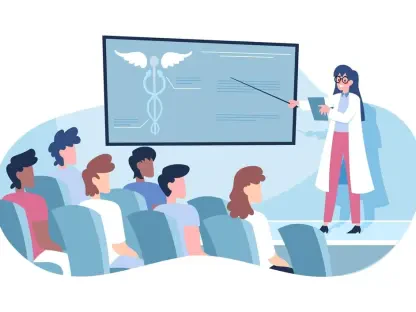In the competitive world of healthcare, the patient experience extends beyond the examination room. One critical, yet often overlooked aspect is the billing experience. While medical practitioners focus primarily on the quality of care, the final interactions that patients often remember are related to billing. Poor billing practices can sour an otherwise positive patient interaction, leading to significant opportunity costs for healthcare providers. By refining these practices, providers can enhance patient loyalty and improve their revenue streams, ensuring financial health for both parties involved.
The Peak-End Rule and Its Impact on Healthcare Billing
The concept of the peak-end rule in psychology suggests that people judge past experiences primarily by their most intense point and their conclusion rather than by the entire experience. This concept is particularly relevant to healthcare, where a patient’s last interaction with the provider is often through the billing process. Even if the medical care received was outstanding, a negative billing experience can overshadow it, leaving patients with a lasting unfavorable impression.
A survey involving 1,200 consumers found that 38% had changed providers due to negative billing experiences. This statistic underscores the high stakes involved in the billing process. For healthcare providers serving 100,000 patients annually, the potential loss could be nearly 38,000 patients switching to competitors who offer better billing experiences. Focusing on a consumer-first billing approach is not just advisable; it is imperative for the financial sustainability of healthcare practices. A seamless and straightforward billing experience can help cement patient loyalty, enhancing both the provider’s reputation and revenue.
Financial Implications of Poor Billing Practices
The financial mismanagement inherent in poor billing practices extends far beyond patient frustration and discontent. Healthcare providers face significant financial consequences when patients disengage due to negative billing interactions. In a sector characterized by rising medical costs and tighter budgets, losing patients directly translates to lost revenue. Furthermore, the cost of acquiring new patients often surpasses the cost of retaining existing ones, making patient retention a financially sound strategy.
Beyond patient loss, unclear or cumbersome billing processes can lead to delayed payments. A study indicated that 40% of consumers refrained from paying their medical bills because they found the administrative processes too confusing to navigate. This leads to increased accounts receivable and cash flow challenges for providers. By streamlining the billing process, healthcare organizations can expedite payments, thereby boosting cash flow and improving their financial stability. Clear and concise billing practices not only reduce administrative burdens but also enhance patient trust and satisfaction, making timely payments more likely.
Enhancing Payer-Provider Coordination
One of the most effective ways to transform the billing experience is through better coordination between payers and providers. Unlike simpler industries where transactions are straightforward, healthcare billing involves multiple stakeholders, creating layers of complexity that patients must navigate. These stakeholders include insurance companies, health savings account (HSA) banks, and government agencies, all of which contribute to a convoluted billing process filled with deductions, insurance claims, and out-of-pocket expenses.
Integrating detailed payer information into billing statements can mitigate many areas of confusion. Real-time deductible statuses and Explanations of Benefits (EOB) can provide transparency that builds trust between providers and patients. According to a survey, 94% of consumers valued such coordination, highlighting its critical role in patient satisfaction and retention. When patients can see transparent calculations and understand their financial responsibilities clearly, they are more likely to pay their bills promptly. This level of trust fostered by transparency can lead to better financial outcomes and increased patient loyalty.
Educating Patients on Health Benefit Accounts
Health benefit accounts like Health Savings Accounts (HSAs) and Flexible Spending Accounts (FSAs) remain largely underused due to a lack of patient education. Given the rise of high-deductible health plans, these accounts are more crucial than ever in helping patients manage their healthcare costs. However, the survey indicated that 33% of consumers were unaware of how to utilize these funds effectively, leading to significant financial waste. For example, Flexible Spending Account holders forfeit approximately $3 billion annually due to unused funds that miss the deadlines to be spent.
Healthcare providers can play a pivotal role by integrating HSA and FSA information into their billing systems. This integration simplifies the utilization of these funds for patients, making healthcare more affordable and demonstrating that providers care about their financial well-being. Educating patients on how to maximize these accounts not only improves their healthcare experience but also assists in timely payments, addressing both the patients’ and providers’ needs. By making the process straightforward and user-friendly, providers can ensure that patients utilize these benefits effectively, thereby enhancing both patient satisfaction and financial health.
Offering Flexible Payment Options
In an era marked by escalating healthcare costs and mounting medical debt, rigid payment plans are often insufficient for modern patients. Patients today demand personalized financing options that align with their financial circumstances and offer flexibility. A notable finding from the survey revealed that 73% of consumers would opt for customizable payment plans if available, indicating a 20% increase from previous years. This signifies a strong demand for more adaptable payment options in the healthcare sector.
Healthcare providers can greatly enhance patient experiences by offering flexible payment schedules, such as biweekly payments or extended due dates. These options alleviate immediate financial burdens on patients, fostering a sense of partnership and trust. When providers tailor payment plans to individual financial situations, they ensure higher satisfaction rates and significantly reduce the likelihood of unpaid bills. This flexibility not only improves patient retention but also enhances the provider’s financial health by minimizing outstanding payments and increasing cash flow.
Benefits of Positive Billing Experiences
In today’s highly competitive healthcare sector, the patient experience encompasses much more than just the quality of medical care. An often neglected but crucial aspect of this experience is billing. While medical practitioners strive to provide excellent care, the final interactions patients remember frequently revolve around billing practices. Poor billing processes can tarnish an otherwise positive healthcare experience, resulting in considerable opportunity costs for healthcare providers. These costs manifest not only in lost revenue but also in diminished patient loyalty and satisfaction. Conversely, by improving billing practices, healthcare providers can significantly enhance patient loyalty and boost their revenue streams. Effective billing methods lead to financial robustness for both the providers and the patients, creating a more sustainable and positive overall healthcare experience. Thus, attention to billing is not just an administrative necessity; it’s a strategic imperative for maintaining and growing a patient base, as well as ensuring long-term financial health for medical practices.









